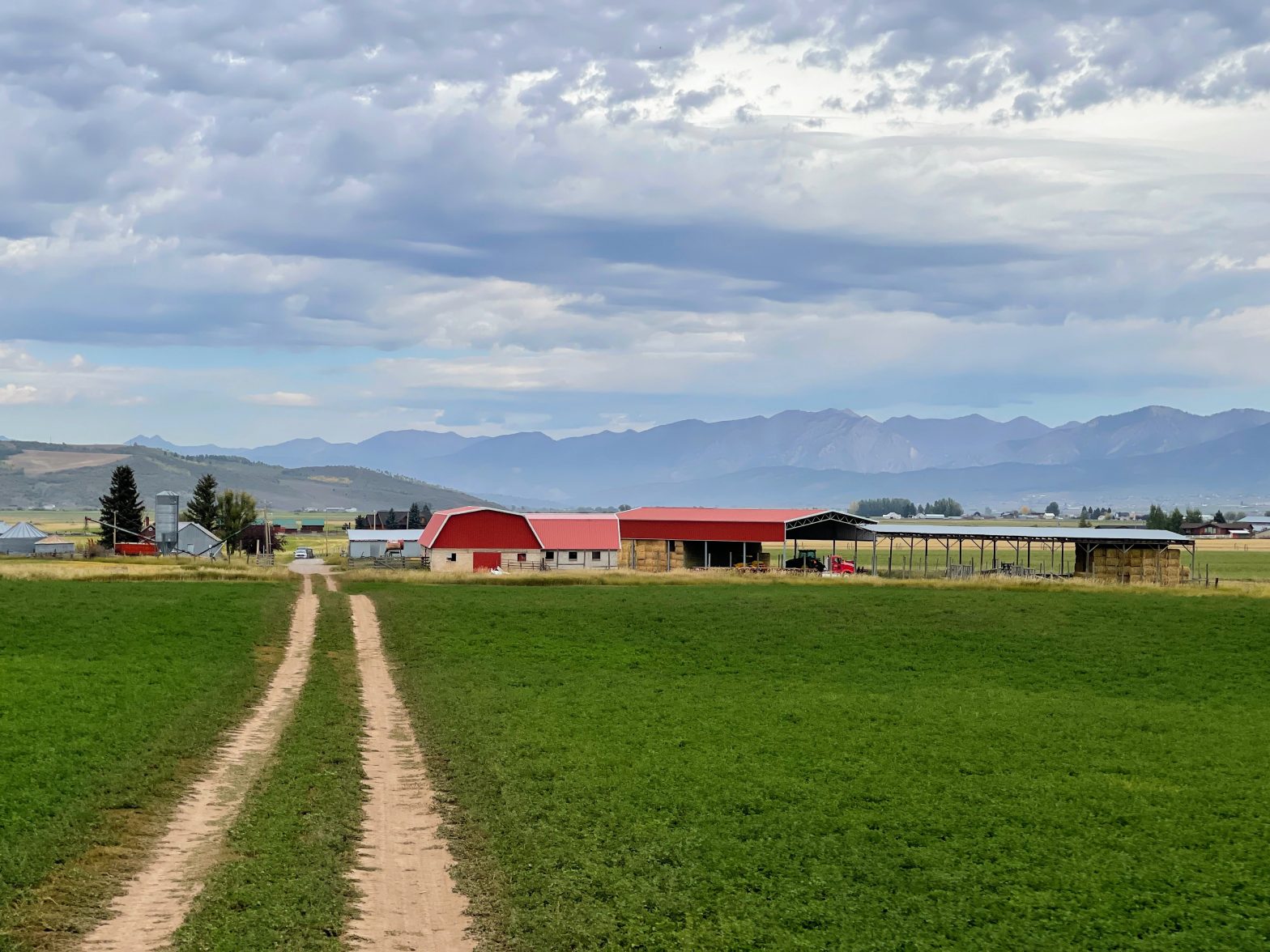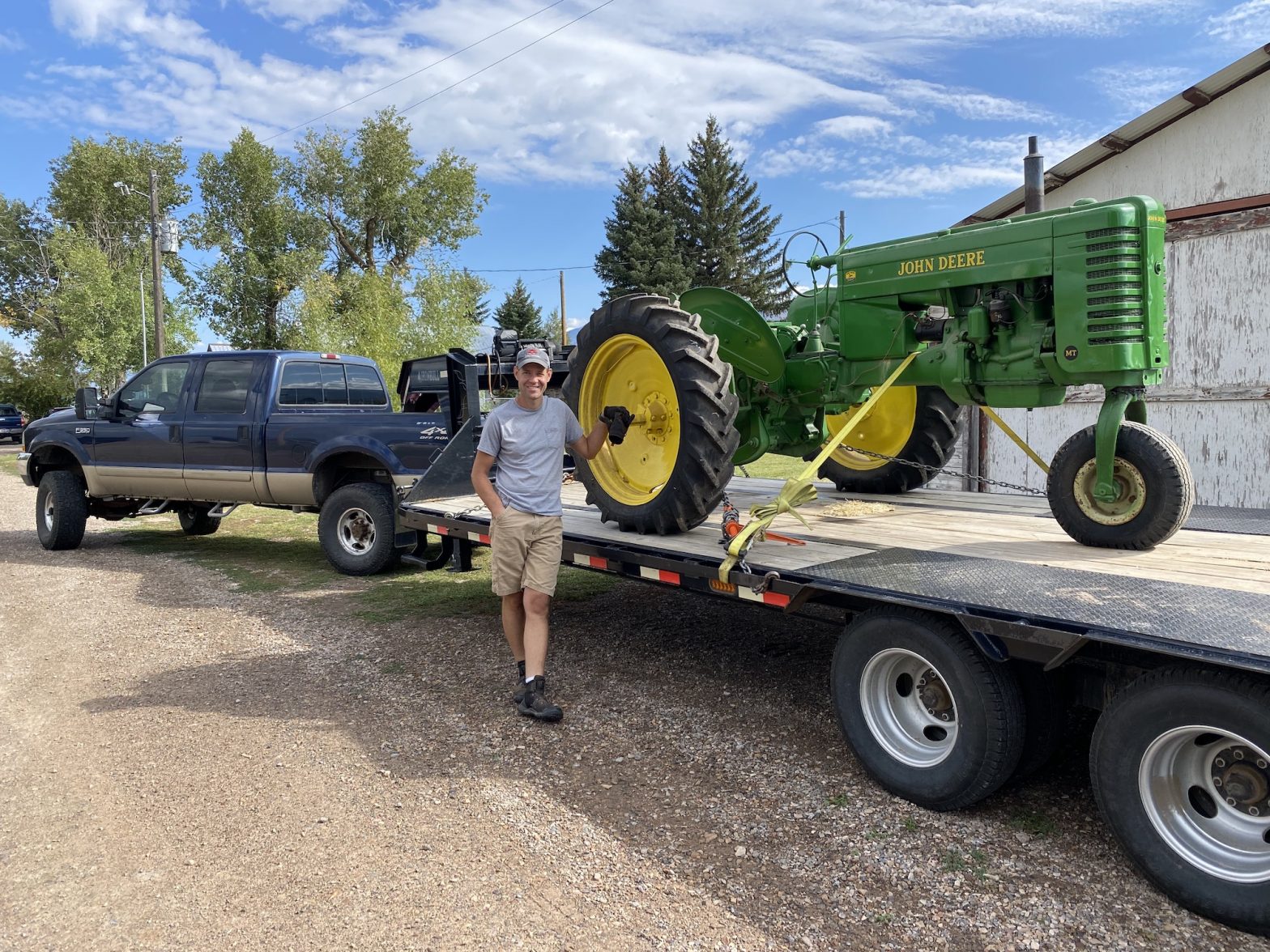My father needed some help hauling some straw bales to his barn for his winter cattle bedding, so I took the John Deere 5020 over with the two old truck wagons to help haul the straw bales. He brought over the 3020 to load them. Straw bales are quite light compared to alfalfa bales, so the smaller 3020 did okay hauling them.
Being on the dry farm is always bitter sweet, as it’s currently up for sale. It’s a long story, but basically my father and his brother are still here in the valley, and the siblings that are out of the valley keep doing all they can to get whatever they can out of it. They changed the original trust while my grandparents were in ill health from the land going to the ones here to splitting it up with an equal share among themselves, which has left little for my dad and my uncle in return. They also continue to ‘move the target’ of what is going to happen to the land as to maximize their own return, with little to no regards for those here. Rather than follow through with what the trust says and settle things (which still isn’t right), they continually change dates and plans according to the market to try to get the most of what they can out of it. If you ask me, that’s quite the investment plan–move away and do nothing with the farm from right out of high school and come back years later to reap the rewards of those that stayed and labored to keep and preserve the farm. And they call themselves good Christians…
Anyway, now I’m just ranting. I guess when something you’ve cherished all of your life is being taken away by others and you’re helpless to do anything about it–you just have to vet little in a blog post.

